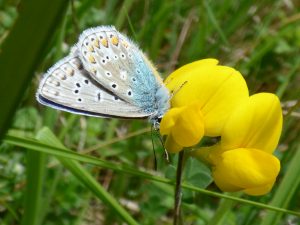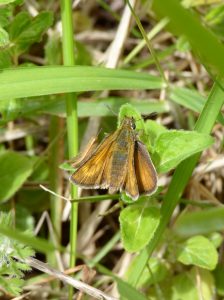A bit of this, a bit of that – but mainly insects
I have very exciting news for you – the kestrels are nesting (again)! There is a new female, whom the male has been keeping sweet with dead mammals and rodents, and last week she laid her first egg. As I type, I can see on the live webcam that there are now four eggs! The kestrels have also featured in the local news – Dorset Echo!
I also put together a video (my first) of their activities – seen via the screen in the Lorton Meadows Conservation Centre.
https://www.youtube.com/watch?v=J7CzDKdbTik
Matt came to visit at the weekend, which was fantastic as expected. Despite me working on Saturday, we had a wildlife wander during my lunch hour to admire the beautiful array of wildflowers and butterflies on the reserve.
A quick changeover occurred as Matt left Weymouth (for UN conference no less) and my mum arrived. Due to engineering works, I actually picked her up in Wareham and we had a lovely wander round the town – particularly as Purbeck Arts Week is on. We then decided to head over to Corfe Castle, as I have only ever driven through it. Only a few steps out of my car, and I was distracted – butterflies!! First I spotted a Common Blue (Polyommatus icarus), flitting about on a very steep slope by the car park. My ma was most bemused at me clambering up and down.
And then I spotted a small orange butterfly … a Skipper! My first orange Skipper of the year, the others being Grizzled and Dingy Skippers. But damn, I was out of practice at identifying these butterflies. It crossed my mind that maybe it could be a Lulworth Skipper (Thymelicus acteon). After all, I was in the right area (coastal Dorset) and they had started flying, but I doubted I would be that lucky, and decided it was probably a Small Skipper (Thymelicus sylvestris). A back of camera shot uploaded onto Twitter, and I was proved wrong in doubting myself, it WAS a Lulworth Skipper! Lucky me indeed!
A stroll around the castle and town was fab – there are some really lovely shops, and I can confirm that the National Trust tearoom does a wonderful afternoon tea! In addition, my mum has proved herself to be useful as an assistant for spotting interesting insects … she may regret doing so as I now I will definitely be taking her out on more walks!
Back by the car park again and I was scrabbling around on the slope looking for Lulworth Skippers. Cracking little butterflies!
With very strong winds forecast for late afternoon, we ought to have left the house earlier on Monday, but neither of us could resist a lie-in. Additionally, my landlord’s cat was delighted to find me sleeping on the sofa and had made herself comfortable on my belly. In the end, we headed off but it took us a while to get to our destination as we pulled into a layby to admire Chesil Beach. Then again, distracted by nature – read more in Day 1 of Megan and Matt Go Wild.
Not long after, we stopped off again, this time for a quick lunch and browse at Felicity’s Farm Shop. Mind you, the browse wasn’t quick … or cheap. I can’t resist scrumptious local produce! Eventually we got to a blustery Lyme Regis, where we definitely got our fair share of sea air!











































































































































































































































































